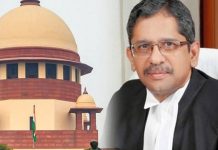Every other party is on overdrive during elections, crowds being the hallmark of their success quotient. Each party is wooing crowds hoping to convert them into votes. This makes them all partners in crime and key contributors to the sudden coronavirus surge

For starters, the world grappled with the when factor vis a vis the vaccine. All through last year, the question that stared one in the face was: when will there be a vaccine? The initial fears on whether there will be one were put to rest with the 24×7 research that was on to get a vaccine as soon as possible. Scientists and researchers put their heads together to crack what then seemed a distant dream. However, in less than a year there were not only favorable results but more than one vaccine available. From when to should to which has been a long journey for people around the world. The fight with the pandemic started last year and is still continuing. With the second wave and new variants literally knocking at the door, there seem no signs of the pandemic going away soon. If anything, it is threatening to strike harder, this time around.
That brought us to the should part and with it the skepticism: should one take the vaccine? A difficult question given that there were several doubts about both the safety and efficacy of the vaccines. There were different versions on whether the vaccine is actually safe to administer on human beings given that the coronavirus is an unknown entity and much of it was and still is in the realm of conjectures and speculation.
Having crossed that hurdle, the next question that was in the face was which vaccine to take? Debate is raging between two Covid vaccines being used in India right now: Serum Institute’s Covishield and Bharat Biotech’s Covaxin.
While Covaxin is India’s first home-made vaccine, Covishield is the local version of Oxford-AstraZeneca and is being produced in India by the Serum Institute of India. The world’s largest vaccine manufacturer in terms of volume, Serum Institute joined hands with the British Swedish drugmaker to produce the vaccine. Bharat Biotech, meanwhile, collaborated with the Indian Council of Medical Research, commonly known as ICMR, and the National Institute of Virology Pune to develop a vaccine.
There are several others that are in different stages of the trial including ZyCov-Di which is being developed by Zydus Cadila, Sputnik V vaccine being developed by Dr. Reddy’s Lab in collaboration with Russia, and a vaccine being developed by Hyderabad based Biological E, in collaboration with US-based Dynavax and Baylor College of Medicine.

As things appear, soon there will be multiple vaccines and one would not only be able to buy a vaccine off the shelf but also be spoilt for choice. Of course, the controversy on which is better or which one should take will continue to occupy minds.
So, while the when and should issues are done and dusted, the last name which vaccine to take will continue to quiz the people in India. That debate is unlikely to die down in the near future.
One cannot take away from the Government its effort in fighting the coronavirus, dispelling initial doubts and hesitancy in getting the jab, and finally ensuring that those who decide to, can get it by simply walking into designated hospitals: no red tape, no hassles.
However, none of this was without its share of controversies be it about exporting the vaccine, not making it available to all age groups, post-vaccination deaths, or about the Government making it clear that it would not compensate in case of adversity for those who have been vaccinated.
When the Government went on vaccine diplomacy drive namely exported vaccines to several countries even while its very own was not fully covered, there was a hue and cry. Critics sought to question the Indian Government’s vaccine Maitri initiative which began with India exporting to its immediate neighbors beginning with the Maldives, Bhutan, Bangladesh, Nepal as also Mauritius, and Seychelles. Indian-made vaccines also reached Jamaica, St Kitts, and Suriname among others.
But what must be music to India’s ears was Dominica’s Prime Minister Roosevelt Skerrit comment after Dominica received 70,000 doses carted by an Indian aircraft: “I must confess” said Skerrit, “that I did not imagine that the prayers of my country would be answered so swiftly”.
While India can sit smug at the kudos it is getting for assisting smaller countries with the Made in India vaccine, it sure faces an uphill task on the criticism about exporting to other countries when the needs within, remain unfulfilled. Some Opposition parties have demanded that India should vaccinate all age groups, irrespective of need. The Delhi government, for instance, has asked the Centre to scale up the vaccination drive and open it up to people below 45 years of age too.
The other issue is post-vaccination deaths. Experts have written to Union Health Minister Harsh Vardhan seeking a “time-bound investigation” into the deaths and adverse effects after the vaccination. The Indian health administration, they have stated, continues to be indifferent to the adverse effects of the vaccination.
There are apprehensions that the Government is under-reporting post-vaccination deaths. On its part, the Government has ruled out any connection between the deaths and the vaccination. Union Health Minister Harsh Vardhan told the Parliament that the deaths that have occurred were examined by medical experts and none of them have any connection to the vaccination.
However, what has irked many is the Government’s attempt to wash its hands off the issue of compensation in cases of adverse effects. The Government’s stand is that it has no such provision and people are free to explore legal options and fight the vaccine makers. Considering that the Government is gung-ho about the vaccine and encouraging people to take the jab, it has a responsibility to either compensate or make the manufacturer accountable if things go wrong.
Leaving the common man to fight his battles, legal or otherwise, is shirking its role and leaving the helpless at the mercy of the all-powerful: in this case the giant companies. India could do well to take lessons from other countries wherein mechanisms for compensation to those facing adverse effects are in place.
Countries like the US use a dedicated fund while WHO’s Covax has a no-fault compensation which equips vaccine recipients to be compensated without even proving that the vaccine caused any harm. The program offers eligible individuals a robust and fast process to receive compensation for “rare but serious adverse events” associated with the COVAX distributed vaccines. It also provides a “no-fault lumpsum compensation” and thus reduces the recourse to
lawsuits.
For the uninitiated, COVAX program is spearheaded by the vaccine alliance GAVI, the World Health Organization, and the Coalition for Epidemic Preparedness Innovations to ensure equitable distribution of Covid-19 vaccines globally.
The Indian Government also needs to set its house in order on yet another score: that being the complete breakdown of protocol and shocking violations of the Standard Operating Procedures or SOPs as they are better known.
The second surge seems to have come with a vengeance and however much the Government may want to shift the blame, it cannot wish away its dubious role in things going haywire.
A case in point is the mega Kumbh Mela wherein hundreds and thousands of pilgrims are allowed to converge, rub shoulders and take a holy dip. Worse still, the Uttarakhand Chief Minister, Tirath Singh Rawat is at the helm overseeing arrangements during the festivities spanning three months.
Apart from showering flowers from a chopper to welcome the devotees, he is on record to state that there will be no “rok tok” meaning restrictions, on their movements: a kind of free for all, to put
it mildly.
Rawat is, perhaps, taking lessons from his mentors in the BJP including Prime Minister Narendra Modi who is addressing huge rallies while campaigning for the forthcoming state elections. Given his popularity Modi’s rallies draw huge crowds and therefore despite best intentions, the SOPs cannot be followed under any circumstances. Credence is lent to this by the fact that very few people who attend these rallies are seen wearing masks. Therefore, it is ironic when the Prime Minister decides to meet Chief Ministers of all states to discuss the second surge.
Kumbh Mela and election rallies are proof enough that when it comes to religion and politics, the BJP will stop at nothing.
Yet, it would be unfair to single it out. Every other party is on overdrive during these elections, crowds being the hallmark of their success quotient. Modi’s rallies may be better attended but this does not absolve the others. They too are wooing crowds hoping to convert them into votes. Therefore, all are partners in crime, as it were.
Elections apart, religious places like the Golden Temple in Amritsar in the Congress-ruled state of Punjab have their own set of rules which are in clear violation of the SOPs or the safety protocols put in place by the Centre. Devotees visiting the Temple are asked to take off their masks while entering the sanctum sanctorum. It may be pointed out that serpentine queues are a distinct feature and it often takes several hours before you can make it inside the precincts to pay obeisance which means you are exposed and undoubtedly vulnerable to infection. It is difficult to believe that the Government, be it the state or Centre, is not in the know of this gross violation. Chances are that they don’t want to ruffle feathers and would rather risk human lives than incur the wrath of priests and religious heads.
This being the tragedy and reality of the powers that be, for the Government to blame the people for the surge in Covid cases, is, unfortunately, missing the woods for the trees.













